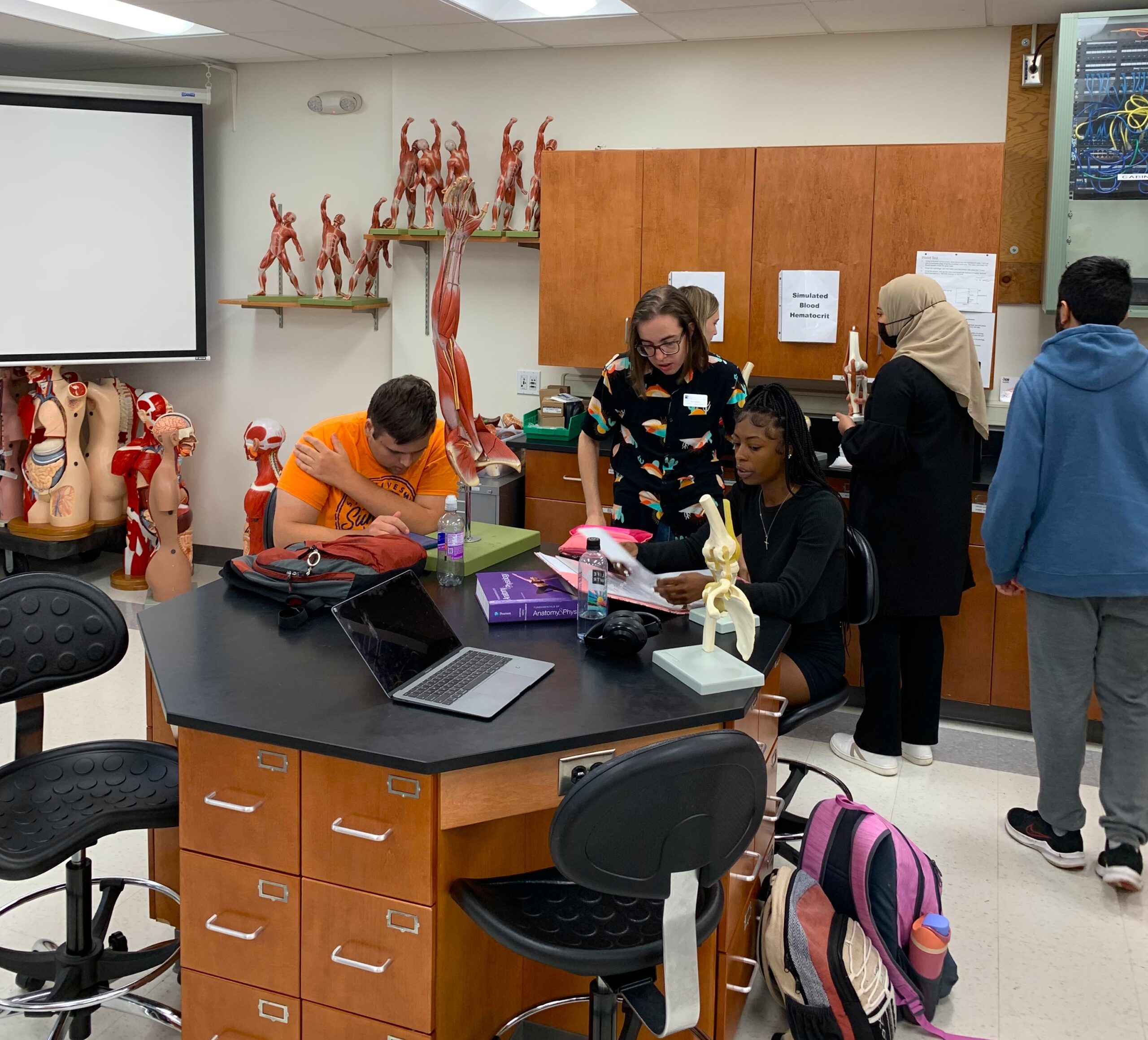Faculty, administrators weigh in on the voting rights of adjuncts
By: Bri Heaney, News Editor
The STLCC College Senate is a self-governance structure that meets weekly to discuss and vote on the affairs and policies of the district. It is comprised of full-time faculty and staff. Each meeting has a set agenda that is determined and revised on a staff and faculty-wide Blackboard forum. Once issues have been decided on, they are recommended to the college’s leadership team.

Adjuncts, or part-time professors, want in on this system. They argue that since adjuncts comprise 71 percent of faculty at STLCC, there should be a seat for them at the table.
The senate was created in the fall, replacing the previous governance structure. Two campuses voted in favor of having adjuncts serve on the senate: Forest Park and Florissant Valley. Two campuses voted against: Meramec and Wildwood.
Forest Park appointed an adjunct position to its senate, which was filled by Instructor Kim Crank. The position allowed for input, but without voting rights at meetings. Forest Park then hosted another vote to allow adjuncts to vote, which passed.
“I got myself appointed to be the adjunct rep at Forest Park and the first thing I did once I found out it was a non-voting position I said, ‘Well, why is that?’ and can we consider changing that as we are working on the new bi-laws? They voted and approved at Forest Park only,” said Crank.
Later that fall, Andrew Langrehr, vice chancellor of academic affairs for STLCC, announced that the college was not interested in having a voting position for adjuncts but would still allow them in a speaking-only position.
“Of course the adjuncts were really disappointed because we had worked so hard and made some progress and it was sort of snatched away,” said Crank. “They just decided we will have no part-time voices.”
Langrehr said that for one campus to allow a voting position for adjuncts, all campuses would need to do the same.
“We had two campuses on one side of this and two campuses on the other,” said Langrehr.
Meramec Political Science Professor Emily Neal said that her opinion on the matter is complicated due to her background in teaching politics, her position as a full-time employee and her position as the president of the full-time faculty teacher’s union.
“The invitation to participate in governance is full-time employment with the college from my perspective,” said Neal.
Neal said this is because of the differences in duties and responsibilities that full-time and part-time instructors have on campus.
“When you look at what full-time faculty are expected to do as a part of their commitment to Saint Louis Community College, it is night and day different to what is expected of an adjunct,” said Neal.
However, Kat Fossell, adjunct and SIUE adjunct teacher’s union chief steward, said she believes that it is those differences in responsibilities and challenges that give adjuncts something unique to bring to the table.
“Any employee of STLCC who is willing to volunteer their time to help improve the school by sharing their perspective and input should be welcomed and valued by the All-College Senate,” said Fossell.
Fossell said that it is not about the amount of hours worked, which for many adjuncts do go over the full time hourly requirement for Missouri, but it is about how the school needs to function and wanting to see the perspective of its necessary components.
“The school can benefit from seeing through the eyes of all their employees,” said Fossell.
The question of the size of the role that adjuncts play at the school has remained unclear. While it is true that 71 percent of teachers at the college are adjunct, it is not clear that they teach the majority of classes.
Neal said that because full time teachers teach a minimum of five classes, many teach up to nine classes with overload, so it is possible that they impact more students.
Economics Professor Gail Hafer, who is a member of the College Senate, said that it is the difference in commitment and time spent as well as the number of students affected by teachers that makes a difference as to whether adjuncts should have a voting role.
“I worry about saying that someone who doesn’t have that strong commitment should be voting in the senate,” said Hafer. “They don’t have the same commitment to Saint Louis Community College as a person whose only occupation is here.”
Hafer also said that, although the commitment is different, she looks forward to seeing the numbers for how many classes and students adjuncts as a whole are teaching as well as hearing from the adjuncts on why they should be senators.
“But then again I could be convinced that the people who are willing to do it really are people whose commitment is to here and will give it the time and energy that it takes,” she said.
Adjuncts report that having the statistics on how many students are taught by full time professors and adjunct professors could be useful in explaining and bargaining to have a seat in the senate. However, those statistics still have not been released.
The non-voting senator who represents Meramec Adjuncts, Amee Colvin, said she is also interested in seeing this data.
“We can’t seem to get this information on who is teaching what,” said Colvin.
Kat Fossell said that the growth in adjunct positions means that the current adjuncts are more likely to stay adjuncts than in the past.
“At STLCC, what I’ve talked to people about is that right now, there is no feasible bridge from being an adjunct to being full time. They are not really hiring full time. They laid off full-time professors,” said Fossell. “It’s really important for adjuncts to remember that you might as well- if you are in this job – to decide to stand up for yourself and to try and make this job as good for you as you can. Because right now, unfortunately a lot of schools are moving toward this more corporate format where they are not hiring full time.”
Colvin, who works in the Communications Department, reports similar trends.
“We lost someone to retirement earlier this year and typically that would mean someone to fill that role, and that is not happening in our department,” said Colvin.
However, Neal said that it’s not either/or and that this issue could be used to divide two similar labor groups with mostly shared interests.
“I see my role as trying to combat those larger forces, like the fact that there are declining opportunities available for full time employment for people who want to become professors. So for me, I see my role as a full-time faculty member and as a union president in trying to create the space where there are more opportunities for full time employment,” said Neal. “So to me the solution isn’t to say ‘oh we’ve riffed the faculty and adjuncts are increasing and so to me I don’t see this as an either/or thing, [or] if you have power in one place, power in another place must go,” says Neal.
Langrehr said that while he understands the adjuncts want to vote, they have a voice through the full-time faculty, many of whom were previously adjuncts before becoming full time with the college.
“It’s a fair position to make that a full-time representative can communicate and understand the issues of a part time employee; most of them have been one in the past,” said Langrehr.
Colvin is not part of the SIUE Teachers Union and spoke little of the future of full time or part time positions. She has three classes in the Communications Department and said that for some students her class is all they will ever know of the school, or of her department. Colvins said that this fight for a vote is all about the value that each student is getting out of their education here at STLCC.
“If the administration doesn’t allow us to be involved in the same way and honored in the same way,” she said, “then the student experience suffers as well, and I think that’s what’s really important to me.”











